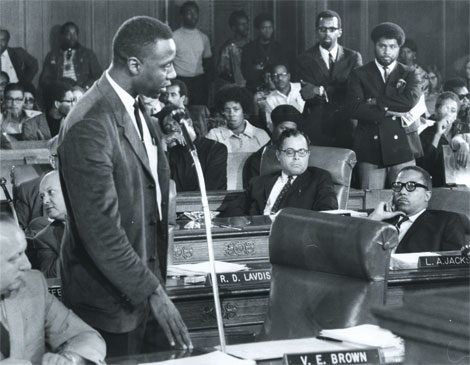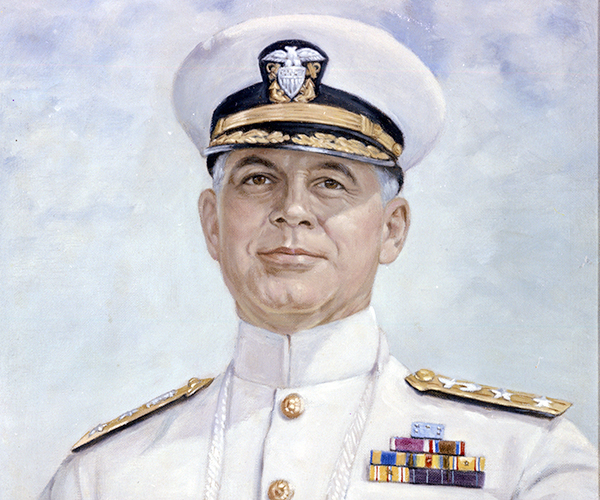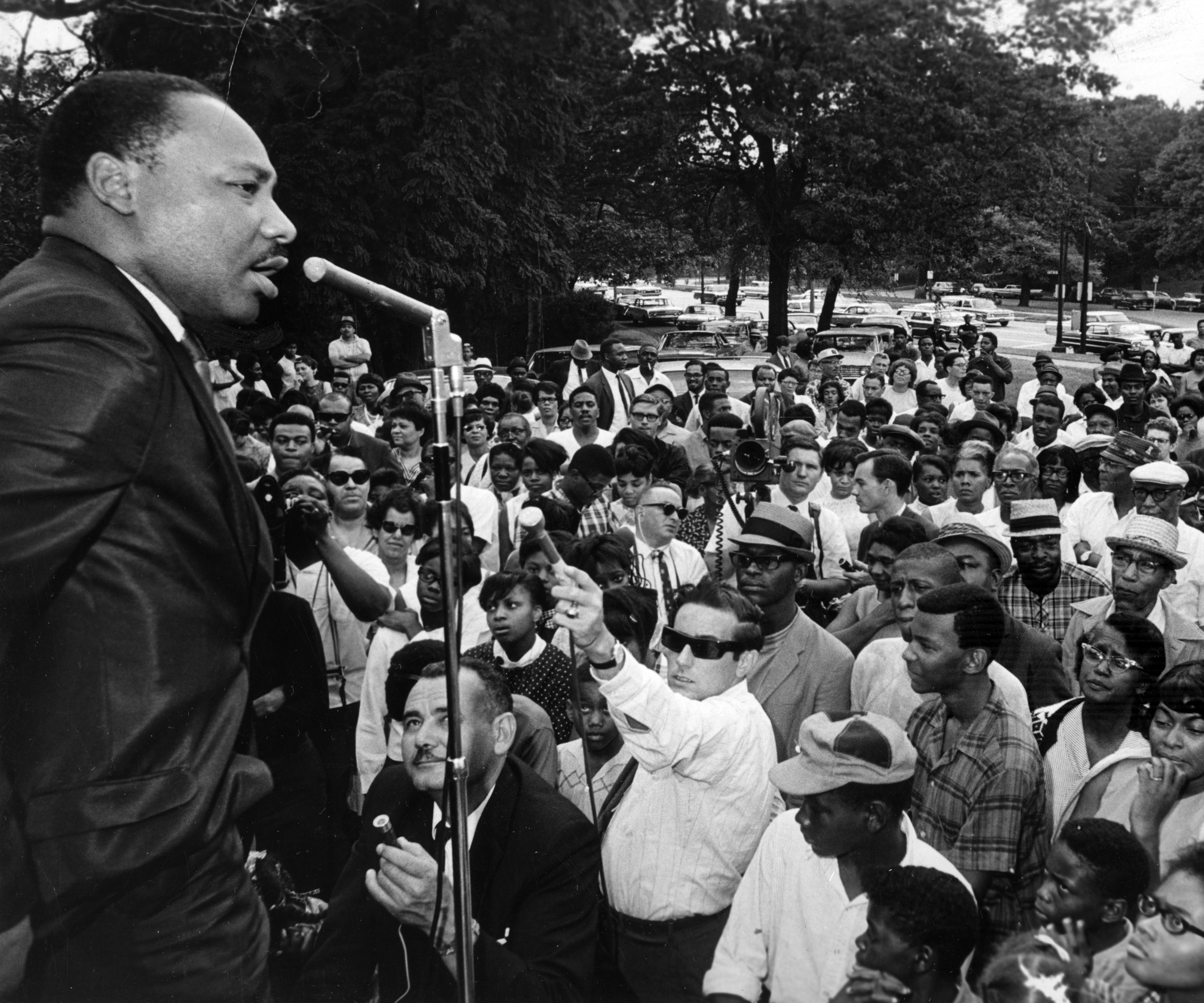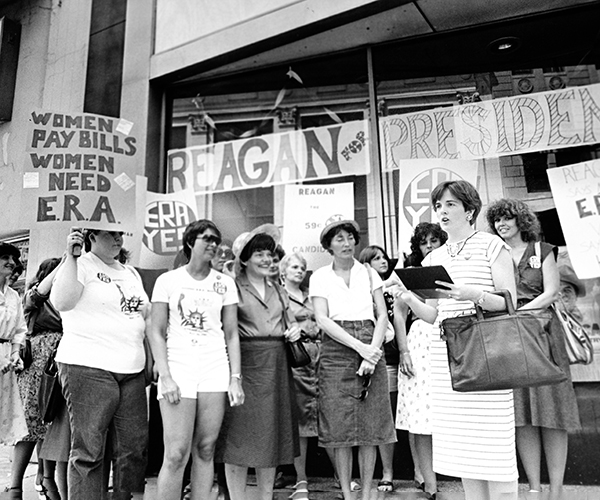Cleveland was simmering with racial tension. After the Hough Riots of 1966 and the Glenville shootout in July, approximately 200 protestors and black nationalists filled the City Council chamber at its Sept. 17 session. Briefly raising the red, black and green Pan-African flag, they refused to come to order, hectoring law-and-order white Democratic councilman Edward Katalinas, as council president James Stanton insisted they "observe proper decorum," according to the Sept. 18 Plain Dealer.
"Across this nation, police are beating the citizenry, men and women, young and old, black and white, on duty or off duty they are participating in such illegal action," said the group's spokesman Larry Thomas.
They ceased only after newly elected councilman Virgil E. Brown Sr., a black Republican representing Glenville, rose to speak. As several protestors glowered behind him, Brown told them they "had come to the meeting with problems and that the council would hear those problems in an open hearing," The Plain Dealer reported. The protestors spoke at a safety committee meeting a month later.
"He always felt some responsibility to represent people who would not normally have had a chance to speak or would have been drowned out — people who would not have had a voice on the floor of City Council," says Virgil E. Brown Jr. of his father, who died in 2010.




